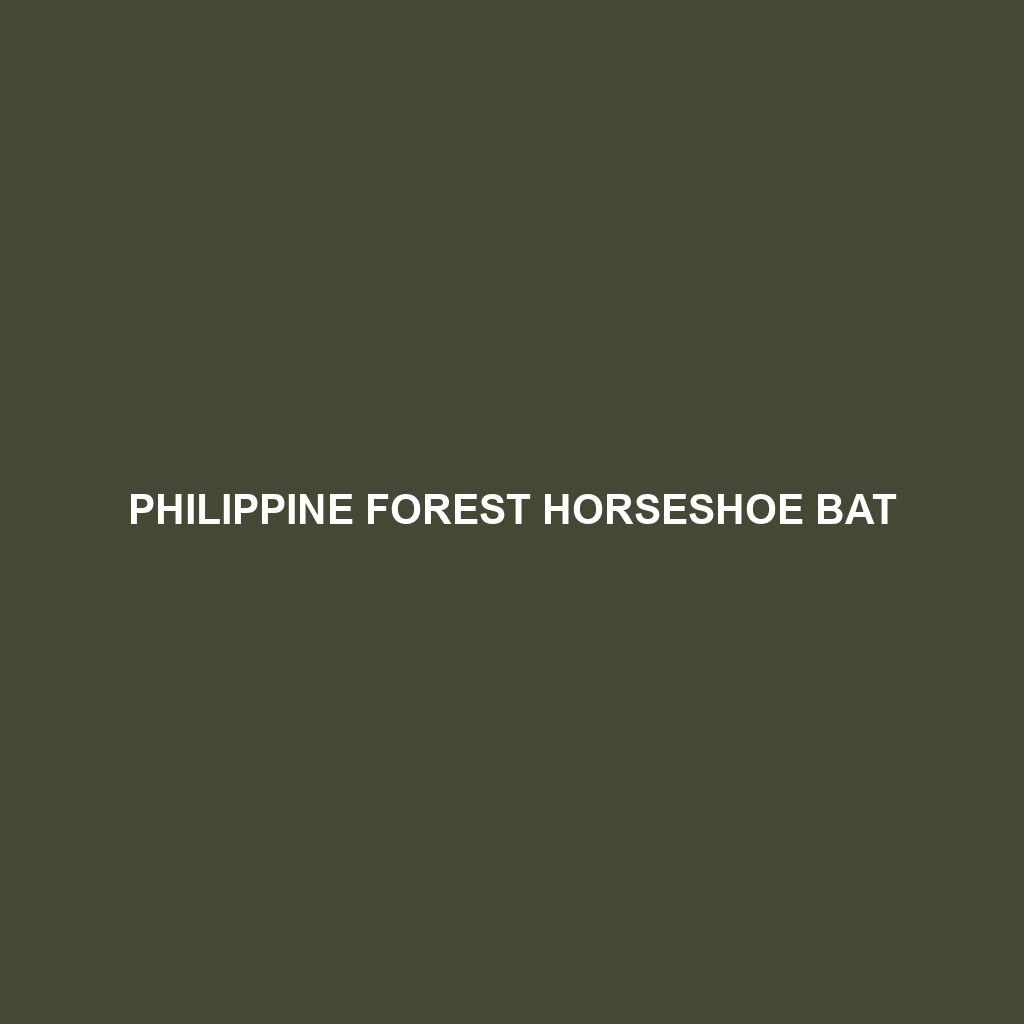Philippine Forest Horseshoe Bat Description
Common Name: Philippine Forest Horseshoe Bat
Scientific Name:
Habitat
The **Philippine Forest Horseshoe Bat** is primarily found in the lush tropical forests of the Philippines, particularly in areas with dense foliage and high humidity. This species thrives in regions such as Mindanao and Luzon, making its home in caves and tree hollows that offer protection from predators and harsh weather conditions. Commonly, they inhabit montane forests and subtropical areas where they find abundant roosting sites and food sources.
Physical Characteristics
The Philippine Forest Horseshoe Bat exhibits a medium size, typically measuring between **5 to 10 cm** in body length, with a wingspan of approximately **25 to 30 cm**. They have a distinctive horseshoe-shaped noseleaf, which aids in echolocation. The fur is typically brown or dark gray, with lighter underparts. Their large eyes are adapted for low-light environments, enhancing their night vision. This bat species is characterized by its slender body and elongated wings, which facilitate agile flight.
Behavior
Philippine Forest Horseshoe Bats are primarily nocturnal, spending the daytime roosting in groups within caves or the foliage of trees. They exhibit a fascinating social structure, often engaging in vocalizations and grooming behaviors. These bats are known for their remarkable echolocation skills, allowing them to navigate through dense forests and locate prey efficiently. During the night, they can be seen foraging close to water sources and in open spaces, showcasing an impressive aerial agility.
Diet
The diet of the **Philippine Forest Horseshoe Bat** consists mainly of insects, such as moths, beetles, and flies. They are adept at hunting and capturing flying insects during flight, utilizing their echolocation to detect subtle movements in the dark. This feeding behavior plays a crucial role in controlling insect populations within their habitat, making them valuable contributors to the ecosystem.
Reproduction
Philippine Forest Horseshoe Bats typically breed once a year, with mating occurring during the wet season. Females give birth to a single pup, which they nurse for several weeks. A notable behavioral aspect is that mothers form nursery colonies, where they care for their young collectively. This social structure enhances pup survival rates and strengthens the bonds within the colony.
Conservation Status
As of the latest assessments, the Philippine Forest Horseshoe Bat is classified as **Vulnerable** on the IUCN Red List. Their populations are threatened due to habitat loss caused by deforestation, urbanization, and human encroachment. Preservation of their natural habitats is essential for ensuring their survival and preventing further decline.
Interesting Facts
– The **Philippine Forest Horseshoe Bat** has the capability to filter different frequencies in its echolocation calls, allowing it to distinguish between various types of prey.
– They play an essential role in pollination and seed dispersal, indirectly supporting the health of tropical forest ecosystems.
Role in Ecosystem
The Philippine Forest Horseshoe Bat plays a vital role in maintaining ecological balance within its habitat. By consuming large quantities of insects, they help regulate pest populations and reduce the need for chemical pesticides. Additionally, their feeding activities contribute to the pollination of various plant species, supporting plant diversity and ecosystem resilience. Their presence is indicative of a healthy environment, making their conservation a priority.
